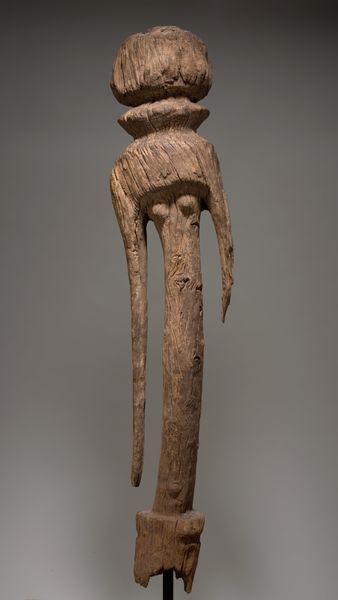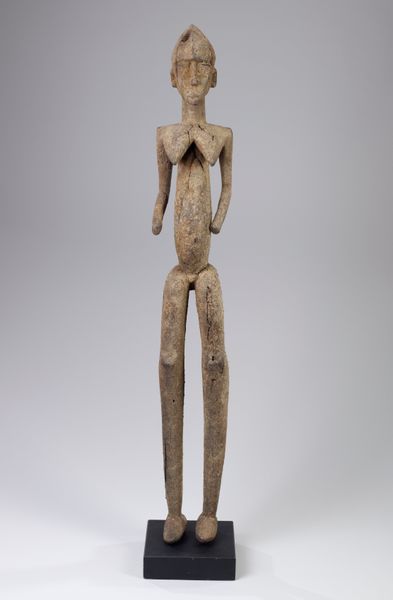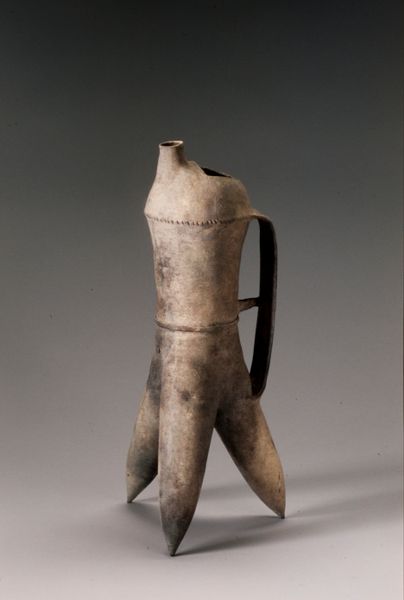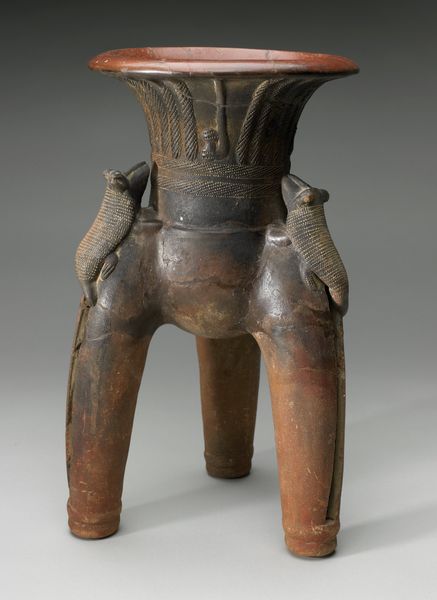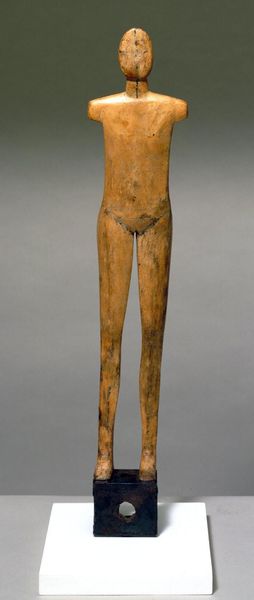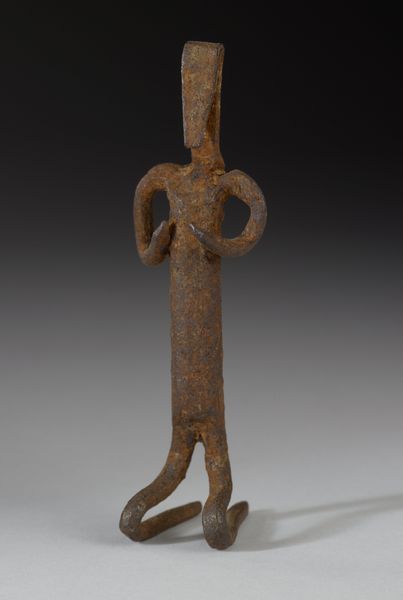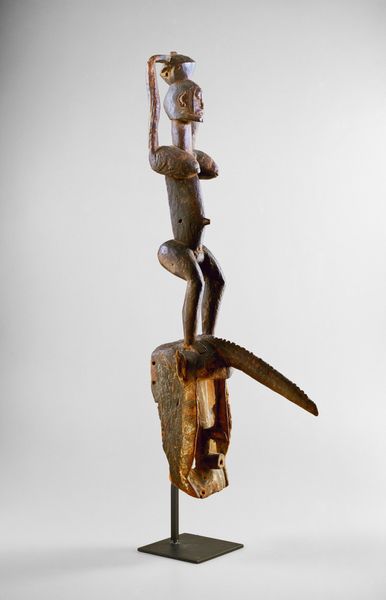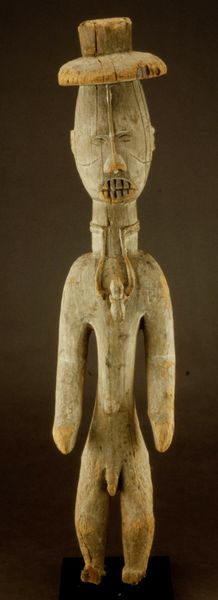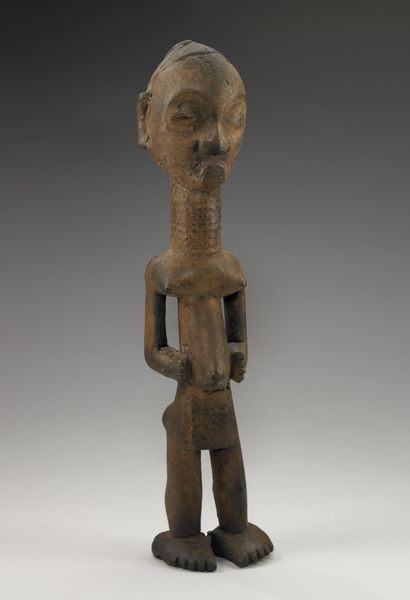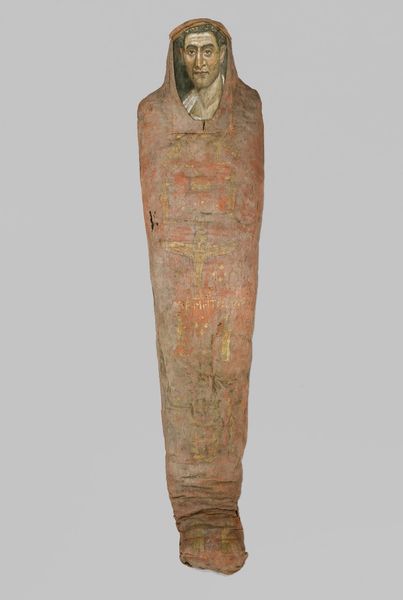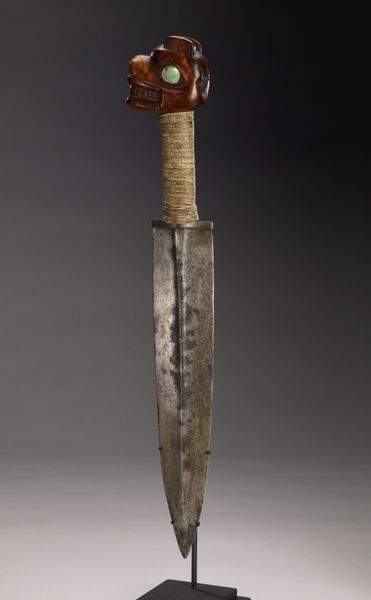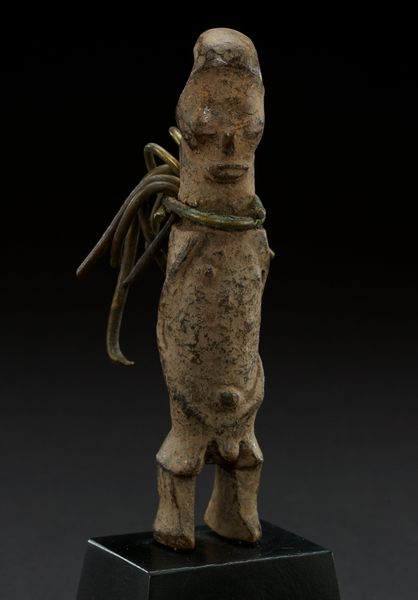
carving, sculpture, wood
#
portrait
#
african-art
#
carving
#
sculpture
#
figuration
#
sculpture
#
wood
#
nude
Dimensions: H. 75 1/2 × W. (approx.) 9 1/2 × D. 9 1/4 in. (191.8 × 24.1 × 23.5 cm)
Copyright: Public Domain
Editor: We’re looking at “Commemorative Post: Male (Ngya)” by an artist from the Bongo people, carved from wood sometime between 1850 and 1897. It’s currently held at the Metropolitan Museum of Art. What strikes me is how simple yet imposing the figure is; the verticality of the figure, the smoothness and age of the wood... Curator, what do you see in this piece? Curator: I see more than just an aesthetic object. Think about the institutional history—how did this commemorative post, undoubtedly significant within its original cultural context, end up displayed in a Western art museum? The act of relocating it transforms its meaning. Consider the power dynamics at play when ethnographic objects are removed from their places of origin and recontextualized as art. Editor: So, its meaning has shifted significantly by being here? Curator: Precisely. It prompts questions about representation and cultural appropriation. These posts were originally used in funerary contexts, intended to honor the deceased. Here, the sculpture risks being reduced to an example of ‘African Art,’ stripping it of its specific ritual and commemorative purpose, transforming it into a spectacle. What purpose does such display serve, other than Western eyes? Editor: It's sobering to consider that its display here can unintentionally erase important cultural meanings. How do we, as viewers, respect the original intent? Curator: It requires constant critical engagement with the museum’s presentation. Asking, Whose story is being told? Who benefits from this telling? The art's display reflects cultural priorities; what were the social functions, how has the imagery been shaped, and how do our biases shape perception? Editor: That is so true. I hadn't thought about it so critically before. Now I am aware how this artwork can spark so much thinking on the broader picture. Curator: It highlights the critical role of the museum – how an institution frames artwork for different public perceptions. Always question, what social forces put them there, and for whom are museums for?
Comments
No comments
Be the first to comment and join the conversation on the ultimate creative platform.
